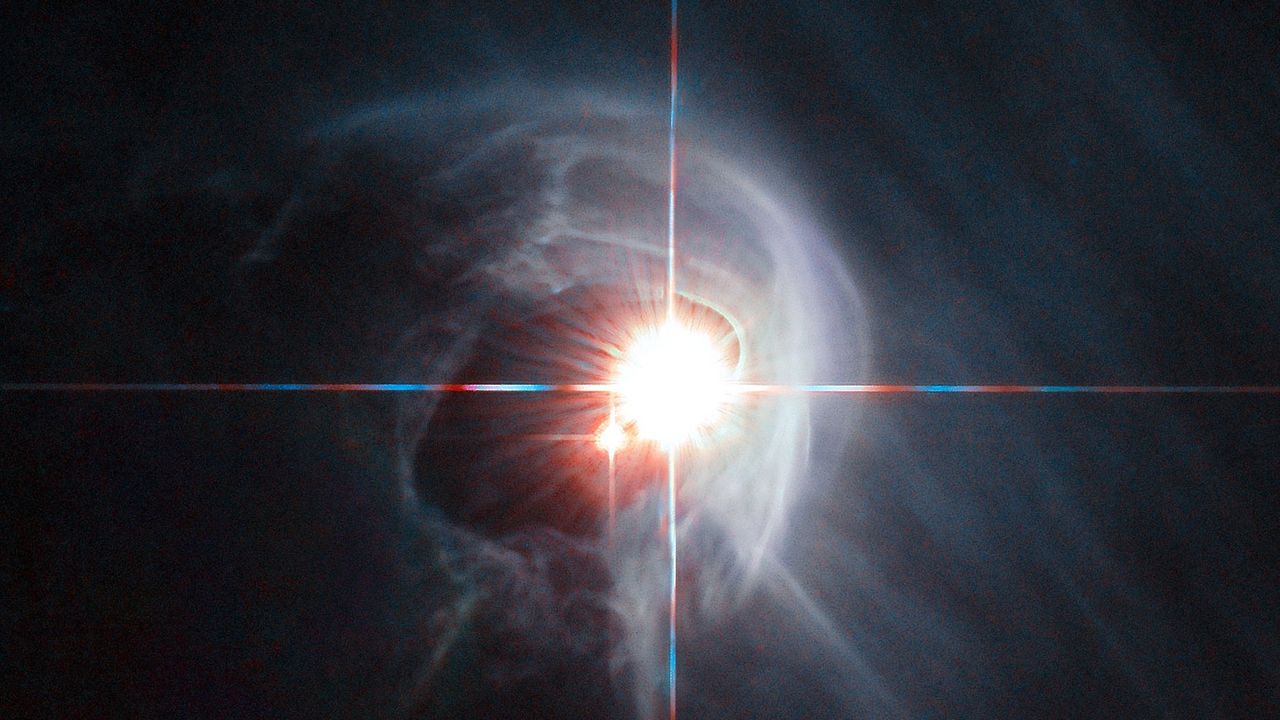
Astronomers have observed a pair of stars locked in a death spiral, and their dance of doom is revealing more about how gravity works.
The system, called ZTF J2130, sits about 4,000 light-years away. Although astronomers have known about this system for a while, this is the first time they have observed it with such high clarity.
This is a very old system. One of the stars is a white dwarf, the white-hot leftover core of a sunlike star. The other is what’s known as a subdwarf star, which is a small star near the end of its life cycle. The two stars are so close together that they complete an orbit in just under 40 minutes. In fact, they’ve already started to kiss. Their mutual gravity is so strong that they’ve stretched and distorted, with the subdwarf’s material flowing onto the white dwarf companion.
Because the stars are pretty hefty and moving very quickly, they emit gravitational waves, which are ripples in the fabric of space-time first predicted by Albert Einstein and confirmed to exist in 2015. This emission of gravitational waves saps energy from the system, inching the two stars ever closer every year.
Using a combination of data from the Oskar Luhning telescope at the Hamburg Observatory in Germany and the CAHA Observatory in Spain in Germany and Spain, the astronomers undertook a painstaking campaign to measure the orbital period as precisely as possible. They found that the orbit is slowly decaying; with every passing second, the orbital period shrinks by about two-trillionths of a second.
This is in line with calculations based on our current theoretical understanding of gravity. But scientists have been eager to move past Einstein’s theory of general relativity for more than a century, so any opportunity to test it immediately draws interest.
The astronomers discovered that an upcoming gravitational-wave observatory, known as the Laser Interferometer Space Antenna (LISA), should be able to directly measure the gravitational waves emanating from this system. The European Space Agency plans to launch LISA in the 2030s, and this stellar pair will still be around next decade.
When the stars finally merge, they will release a supernova-level explosion that might be bright enough to be seen with the naked eye. In the meantime, before we get to enjoy that fireworks show, we’ll just have to put gravity to the test.

